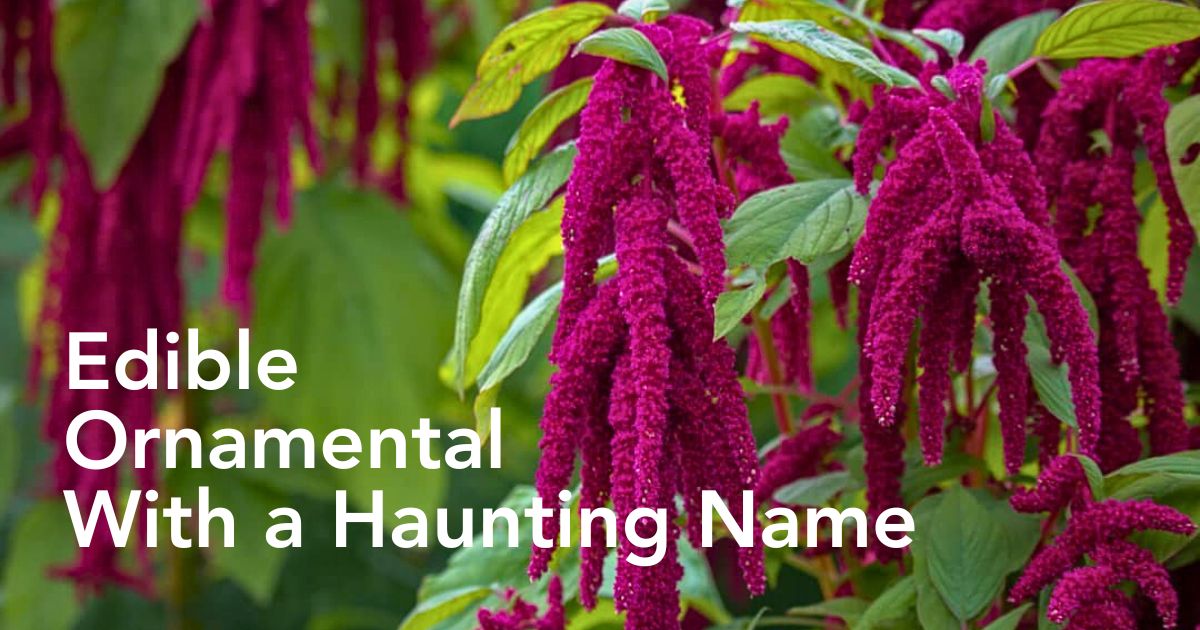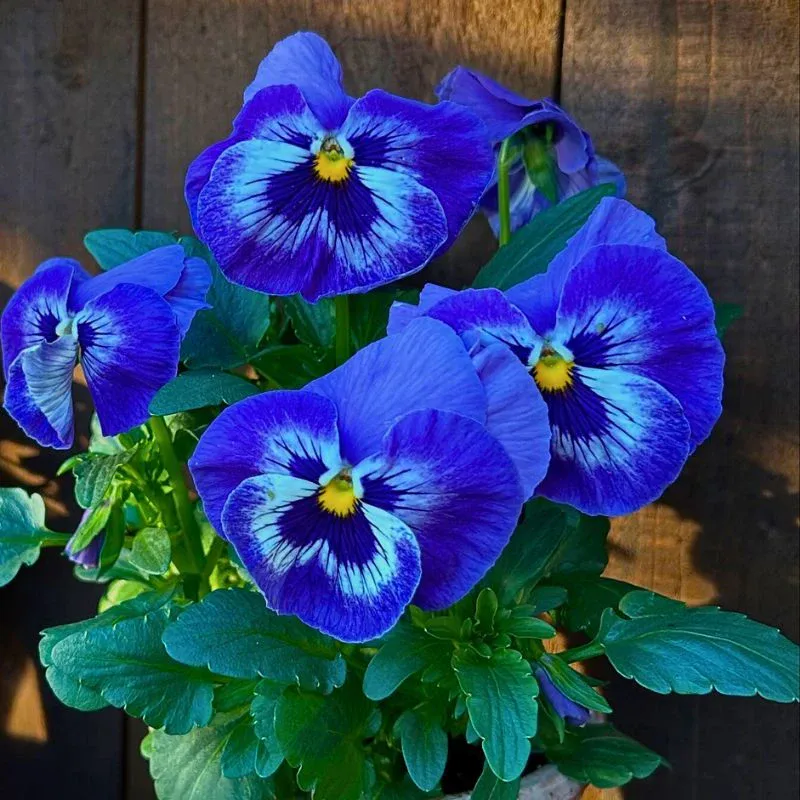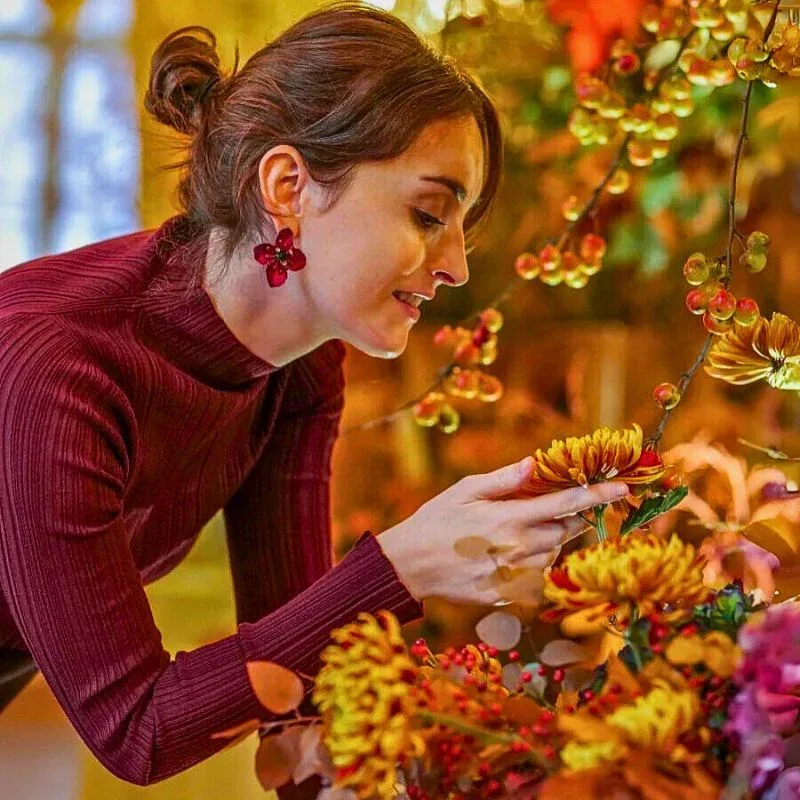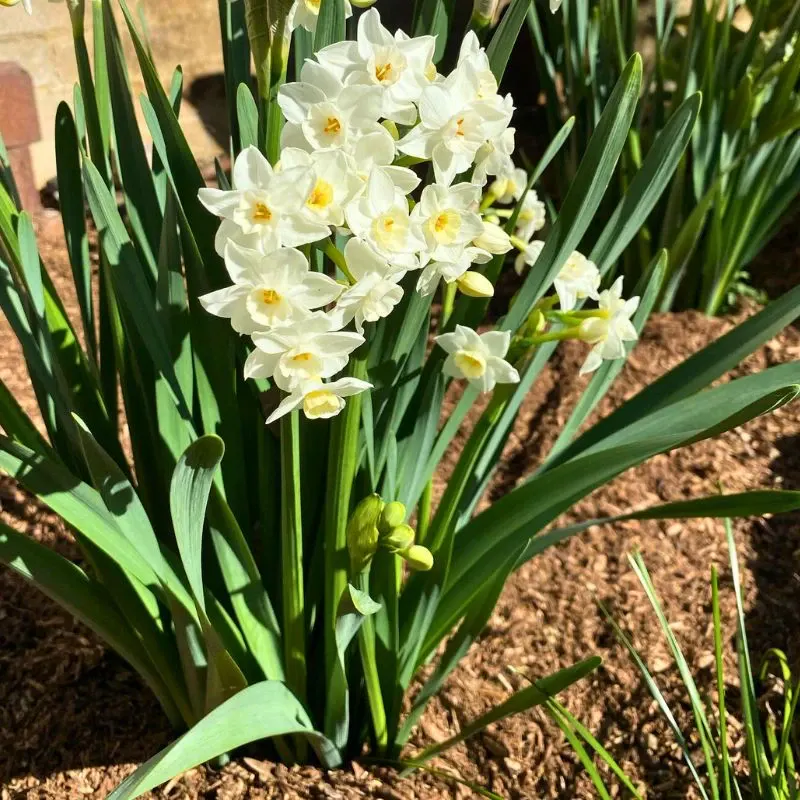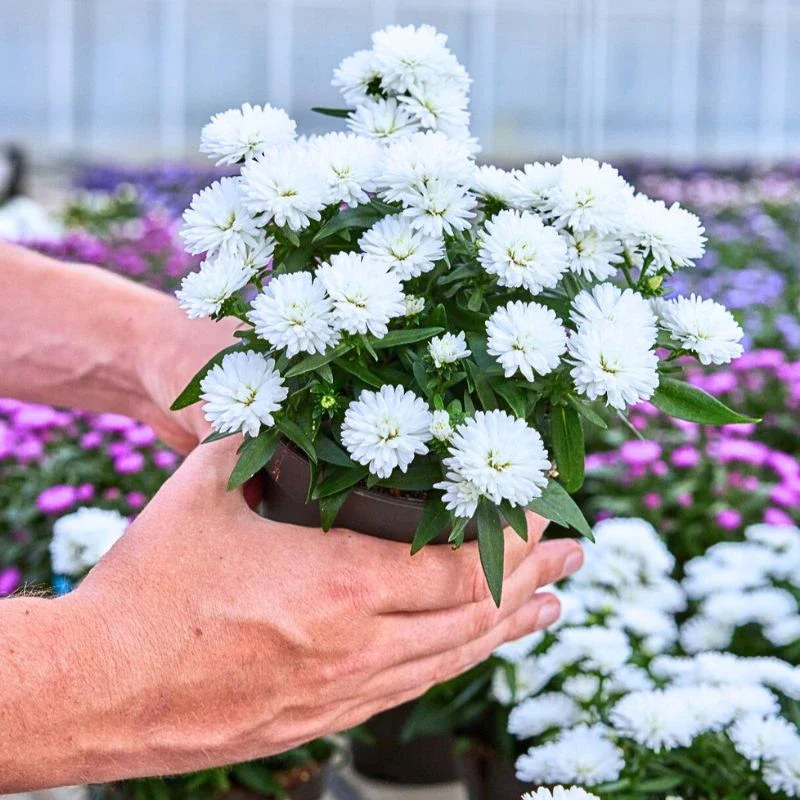Featuring dramatic crimson tassels that cascade downward almost like velvet chandeliers, the Love Lies Bleeding plant (Amaranthus caudatus) carries an impressive presence, despite its haunting name. Its ornamental beauty and other values have seen it woven into different cultural traditions. But it remains quite easy to grow and stunningly beautiful in practically every aspect. Gardeners, designers, florists, and even artists are often fascinated by this plant. But how well do you know it?
Understanding the Love Lies Bleeding Plant
The Love Lies Bleeding plant belongs to the Amaranthaceae family, a diverse group that includes both ornamental and edible species. This Amaranthus caudatus specifically refers to the distinctive variety, named for its long, rope-like flower clusters that can reach lengths of up to two feet. These pendulous inflorescences, typically in deep crimson or burgundy shades, create the plant's signature weeping appearance.
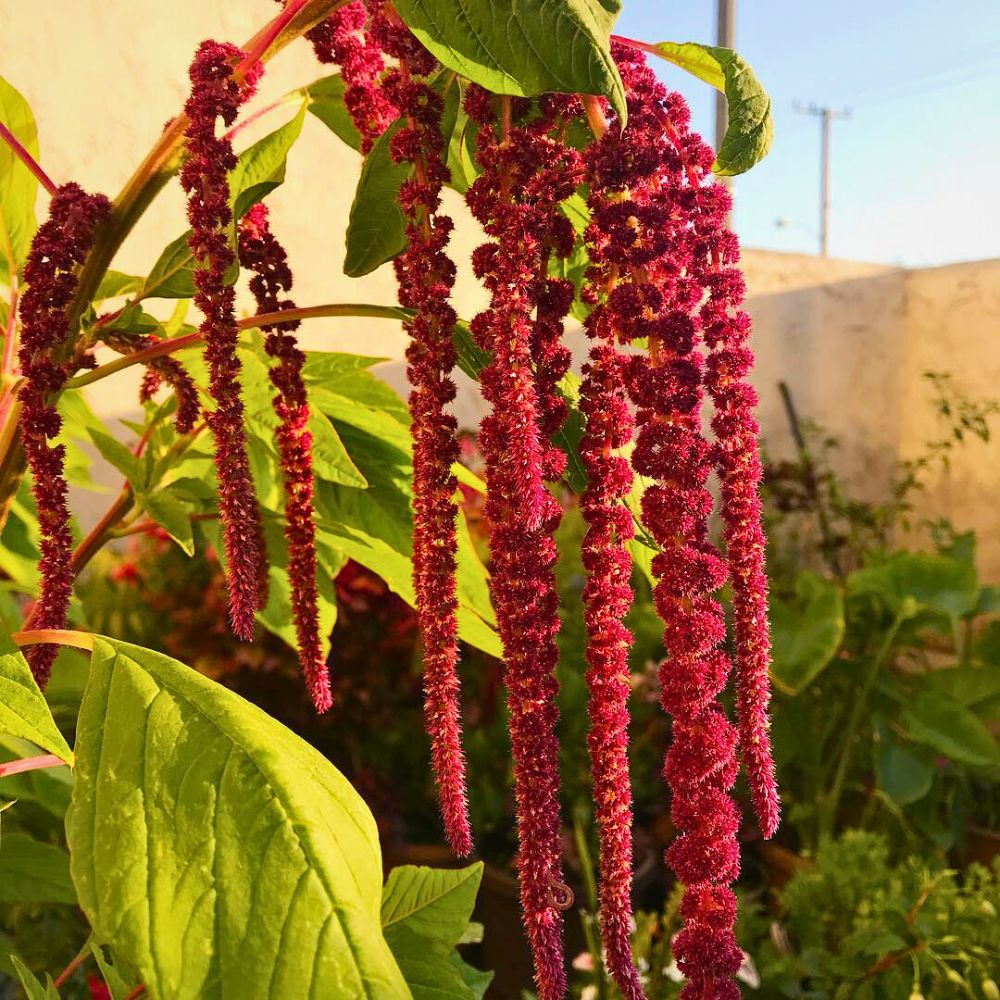
Standing between three to five feet tall with a spread of approximately one to two feet, the Love Lies Bleeding plant commands attention without overwhelming garden spaces. Its fresh green foliage provides perfect contrast to those dramatic, drooping flower tassels. What many hardly realize is that the Love Lies Bleeding plant is entirely edible—both leaves and seeds have been consumed for thousands of years, though today it is primarily cultivated for its ornamental impact and design practices.
The plant's foliage comprises broad, rhombic-ovate to elliptic leaves measuring 5-15 centimeters in length, displaying an attractive pale to medium green coloration that provides an elegant backdrop to the dramatic floral displays. The Amaranthus caudatus Love Lies Bleeding develops from a central taproot system, supporting a sturdy upright stem that branches laterally to accommodate the spectacular drooping inflorescences.
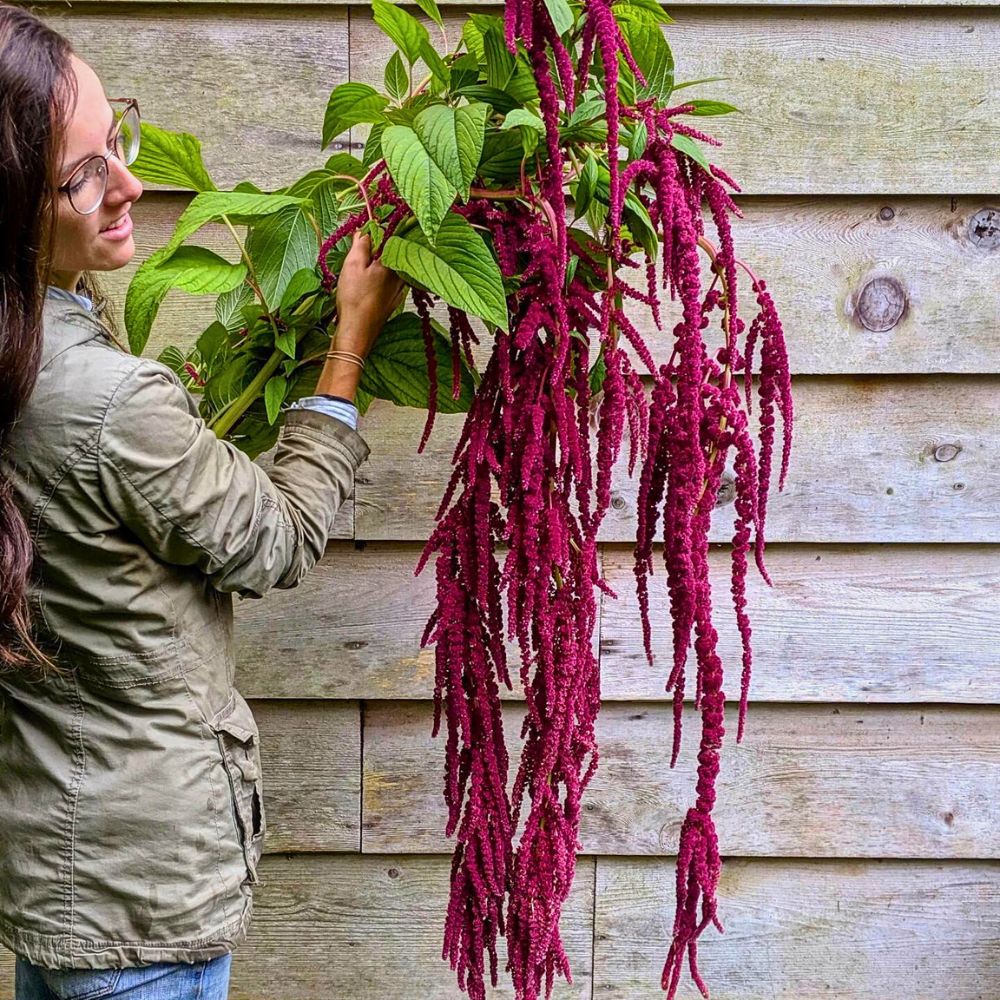
For their flowers, the Amaranth flower of the Love Lies Bleeding actually consists of countless tiny florets densely packed along each tassel. This structure gives the plant its lush, velvety texture and explains why it holds its form so beautifully, be it in the garden, fresh in arrangements, or dried for dry flower décor.
Botanical Origins and Historical Spread of Amaranthus Caudatus
The Love Lies Bleeding Amaranthus plant originated in the tropical regions of South America, particularly the Andean highlands, where it was revered by indigenous cultures as both a sacred crop and ornamental gem. The plant also has its ancestry in parts of Africa and India.
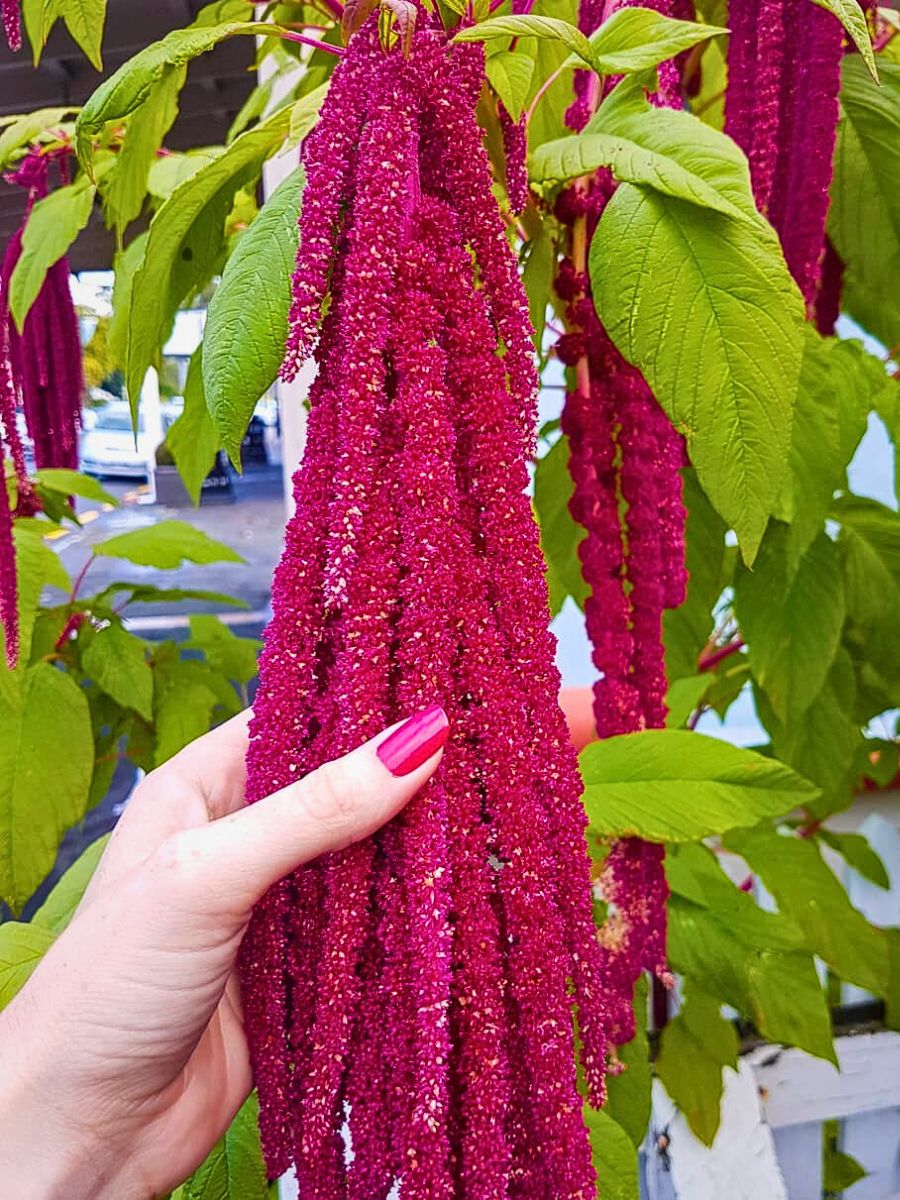
Love Lies Bleeding plants have traveled far from their ancestral homes. Ancient civilizations, including the Aztecs and Incas, cultivated Amaranth species for both food and ceremonial purposes. The grain provided essential nutrition, while the plant's appearance made it significant in religious rituals. Archaeological evidence suggests that these plants have been cultivated for over 6,000 years, with the Quechua people of South America referring to them as ‘kiwicha' and the Aymara people calling them ‘qamasa’.
The plant's journey to Europe began during the Age of Exploration, when Spanish conquistadors encountered Amaranth in the Americas. By the 16th century, the Amaranthus caudatus Love Lies Bleeding had established itself in European gardens, prized by Victorian gardeners who valued its theatrical presence and melancholic overtones. From there, it spread elsewhere globally, adapting to various climates while maintaining its distinctive characteristics.
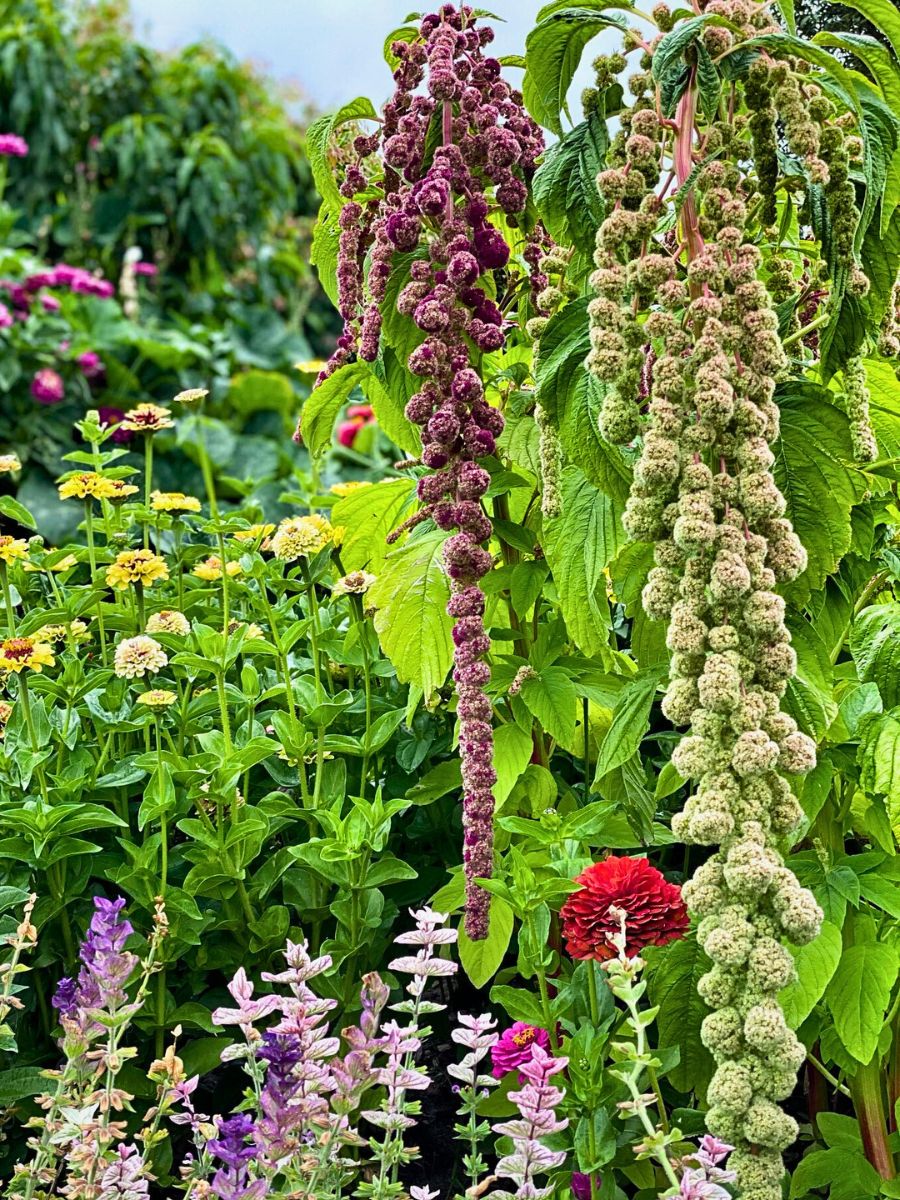
In its native regions, the Love Lies Bleeding plant grows as a short-lived perennial. However, in temperate climates, it functions as a frost-tender annual, completing its entire lifecycle within a single growing season, which actually makes it more manageable for most gardeners.
Symbolism and Cultural Meaning of Love Lies Bleeding
The evocative name ‘Love Lies Bleeding’ has inspired numerous interpretations. Most commonly, the name references the plant's appearance—those crimson tassels resembling drops of blood falling toward the earth, a pictorial metaphor that connects the plant to themes of lost love, heartbreak, and affection even in the face of sorrow.
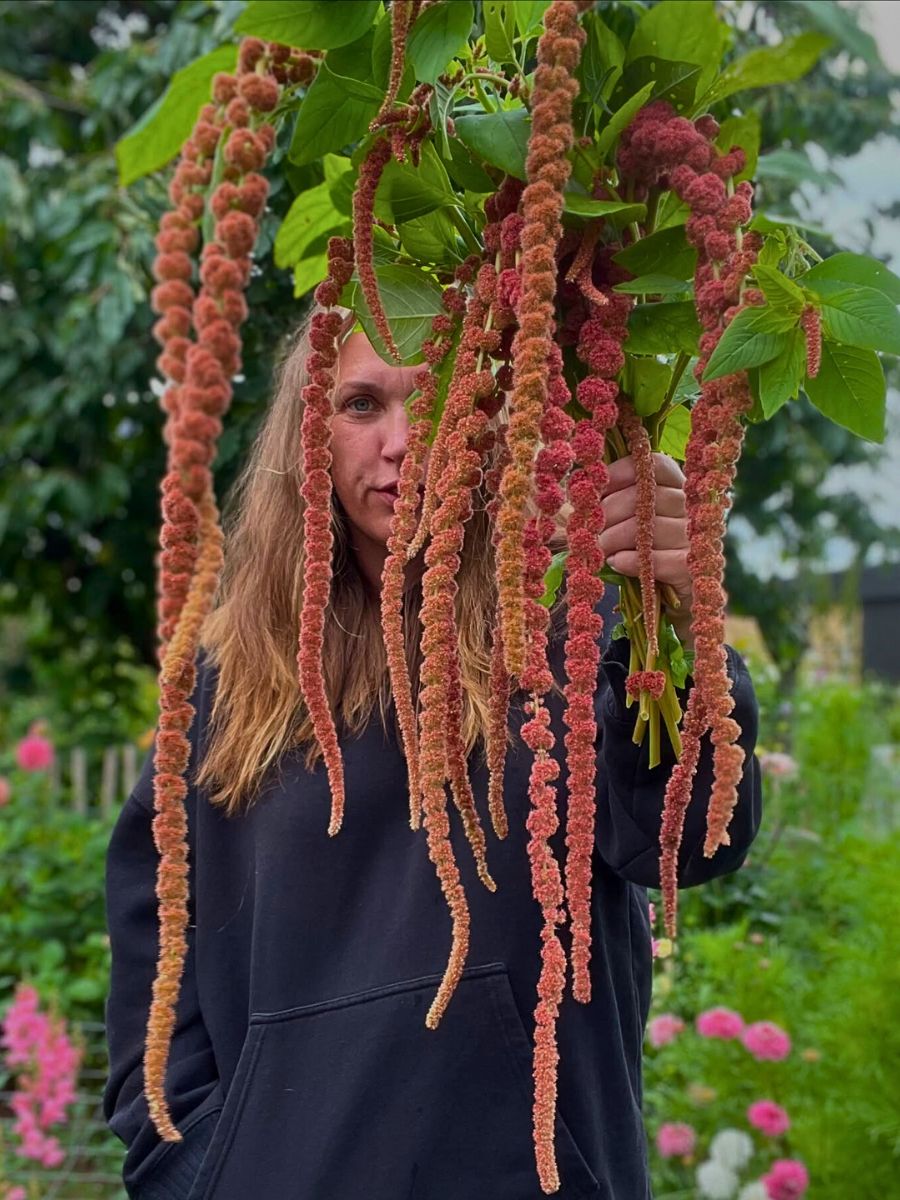
In Victorian flower language, where every flower carried a coded meaning, Love Lies Bleeding symbolized hopeless love and the pain of a broken heart. Yet it also represented hopeful perseverance—the idea that love perseveres despite suffering. This double allegory made it popular in romantic gardens and the poetry of the era.
Greek mythology has an interesting connection through the Amaranth family name itself. ‘Amaranth' derives from the Greek ‘amarantos,’ meaning ‘unfading’ or ‘immortal.’ Ancient texts describe Amaranth as a mythical flower that never withers, signifying immortality and eternal love. While the specific Love Lies Bleeding variety was not known to ancient Greeks, this immortal symbolism has retroactively attached itself to the plant's meaning.
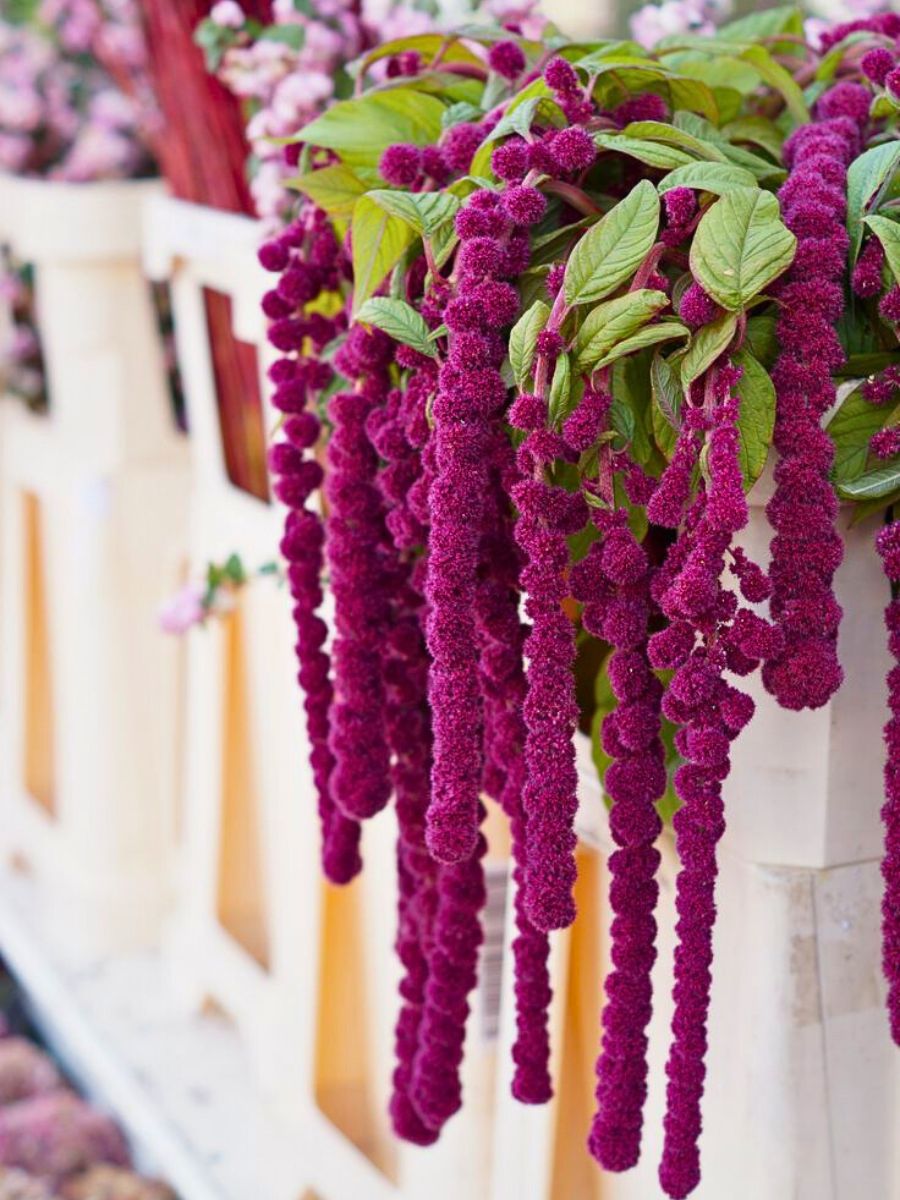
In Asian cultures, particularly in parts of India and Nepal where Amaranth grows profusely, the plant carries more positive associations. It represents hospitality, abundance, and the generosity of nature. During harvest festivals, the Amaranthus flower of the Love Lies Bleeding plant sometimes appears in celebratory decorations alongside marigolds and other traditional flowers.
Christian symbolism has also embraced the plant, with some interpretations seeing its blood-red color and drooping form as representing Christ's suffering and sacrifice. Medieval monastery gardens occasionally featured Love Lies Bleeding plants in contemplative spaces designed for meditation on mortality and redemption.
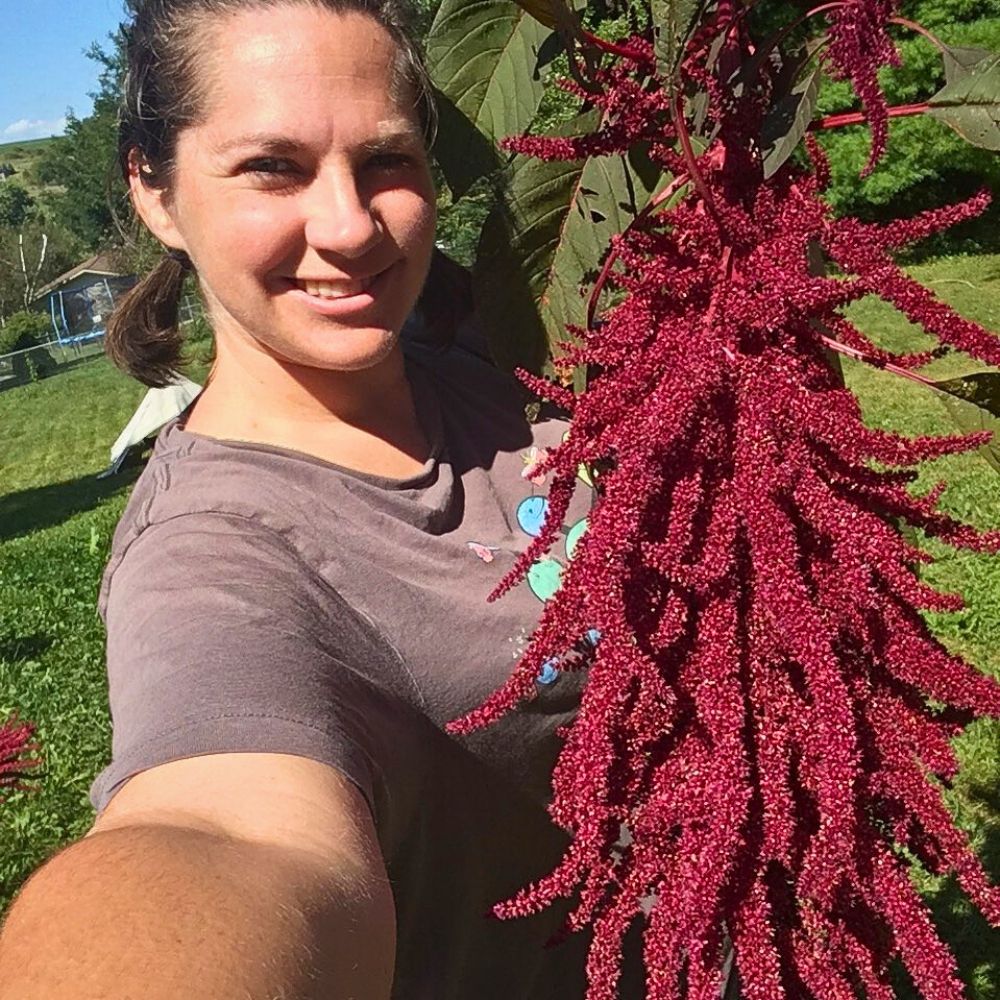
How to Plant Love Lies Bleeding Seeds
Growing this plant from seed is quite easy, even for beginner gardeners. It only requires understanding how to plant the Love Lies Bleeding seeds properly to ensure strong germination and healthy plants. When to plant Love Lies Bleeding plants depends on the climate and approach.
For the earliest results, start seeds indoors approximately six to eight weeks before your region's last expected frost date—typically March in most temperate zones. The seeds need light to germinate, so avoid burying them deeply. Instead, press the Love Lies Bleeding plant seeds gently onto the surface of moist seed-starting mix, then cover with a thin layer of vermiculite or perlite. This allows light penetration while preventing the seeds from drying out.
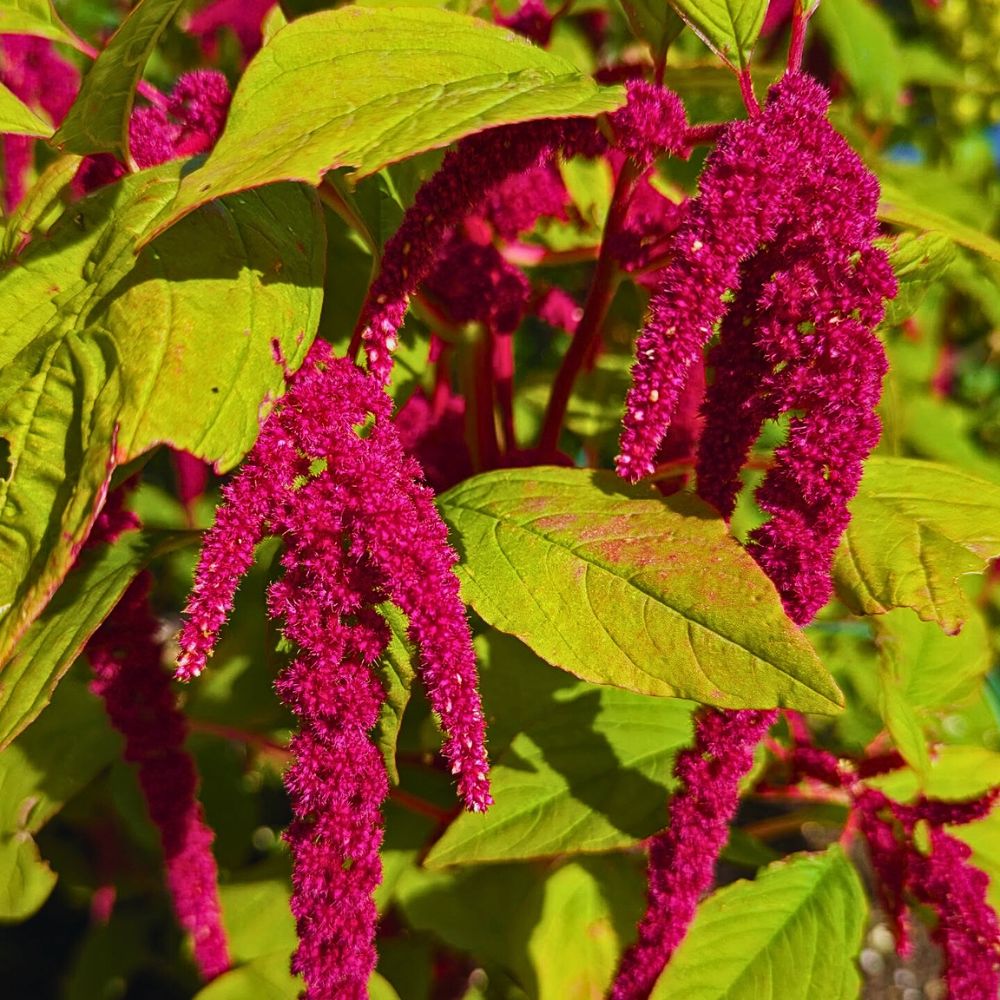
Maintain soil temperature around 20°C (70°F) for optimal germination, which typically occurs within 7-14 days. Once seedlings develop their first true leaves, transplant them into individual pots and continue growing indoors until outdoor conditions become suitable.
For direct sowing, the ideal time for planting the Love Lies Bleeding plants outdoors is after all danger of frost has passed and soil temperatures have warmed considerably. Late spring through early summer works well for most regions. Simply scatter seeds over prepared soil, pressing them lightly into contact with the earth but not covering them deeply. How deep one should plant Love Lies Bleeding plants from seed is barely a quarter inch maximum, as they require light for germination.
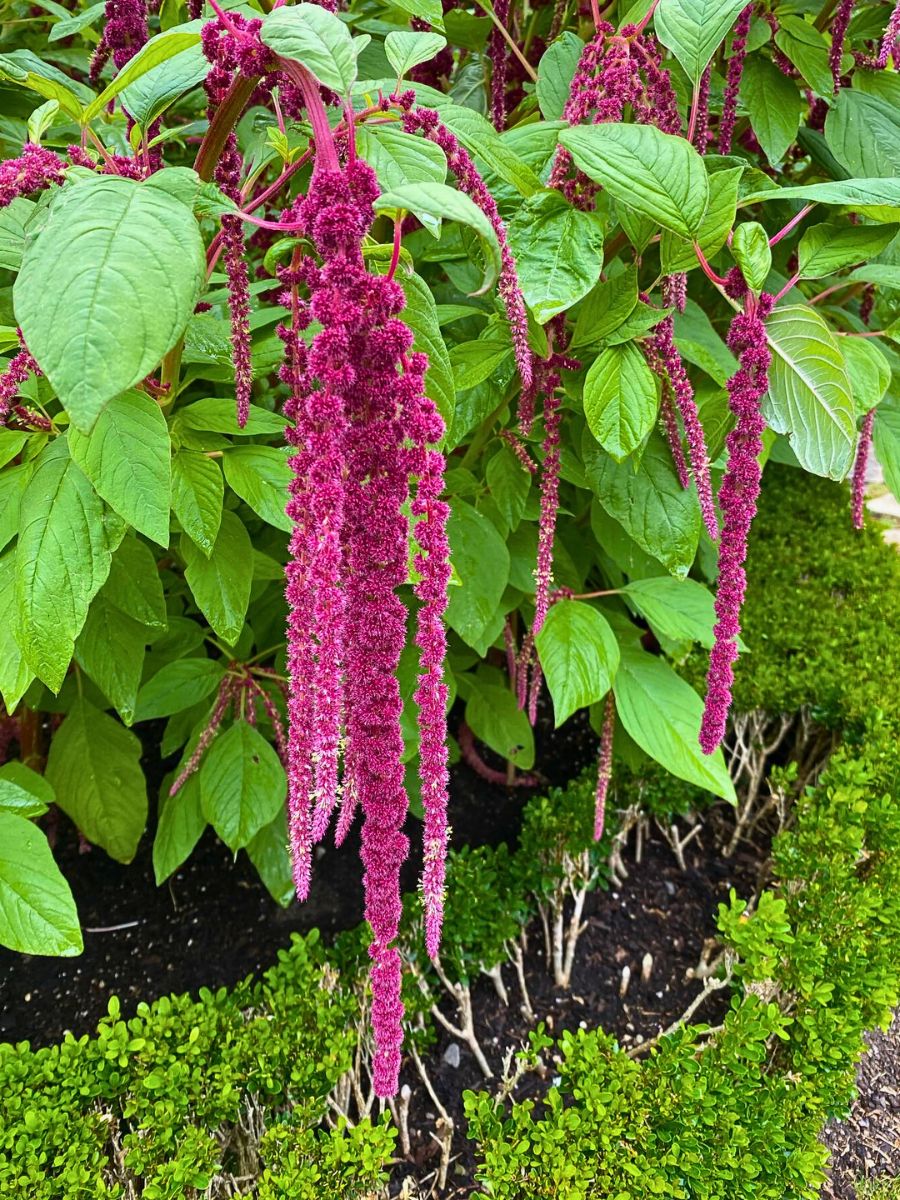
Where to Plant Love Lies Bleeding Plants
Where one grows the Love Lies Bleeding plants significantly impacts their success. These heat-loving annuals thrive in full sun locations receiving at least six to eight hours of direct sunlight daily. While they tolerate partial shade, flowering may be less prolific and colors less intense without adequate light.
Soil requirements remain refreshingly undemanding. The Love Lies Bleeding plant actually performs better in average to slightly poor soil rather than overly rich conditions. Extremely fertile soil encourages excessive foliage growth at the expense of flower production. Well-draining soil is essential—waterlogged roots lead to rot and disease. Sandy loam or amended clay works perfectly.
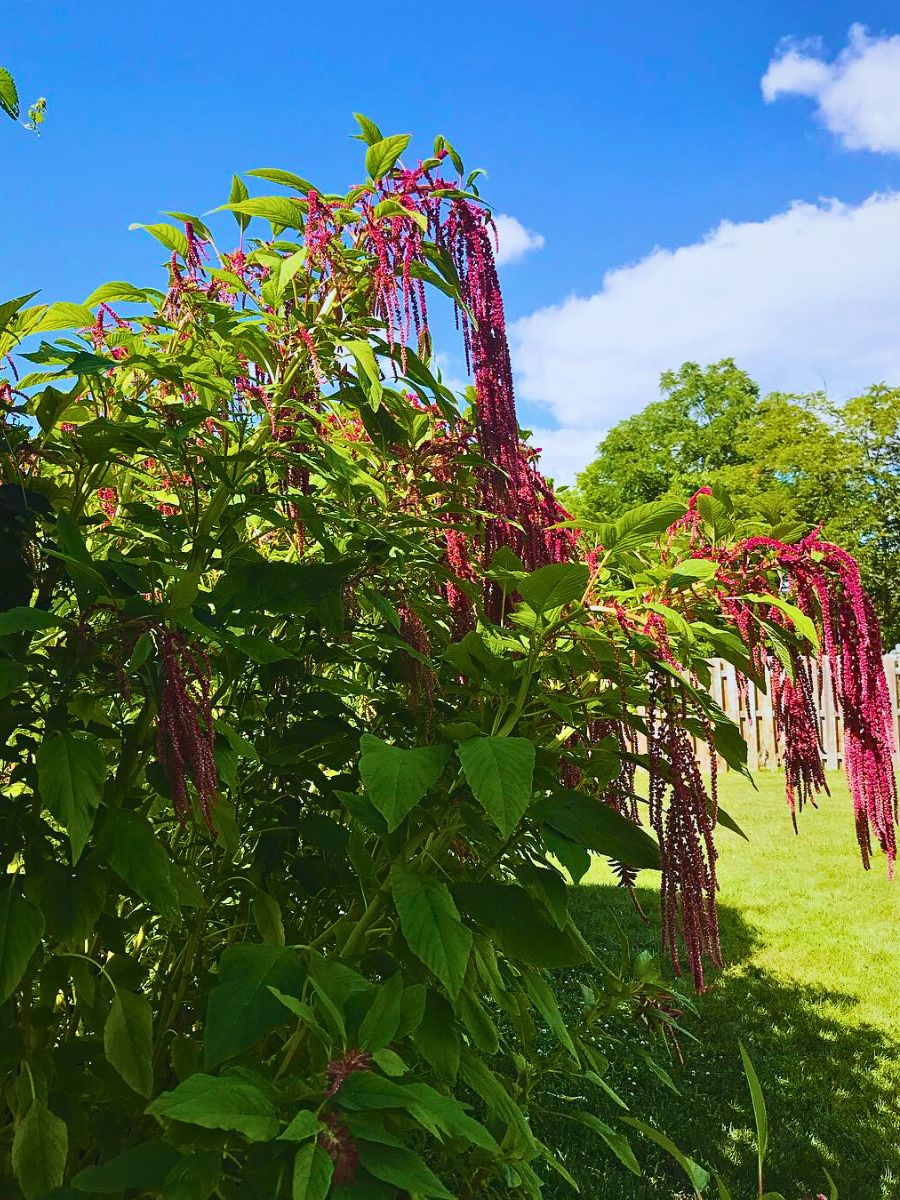
Also, where to plant Love Lies Bleeding plants in a garden design depends on their mature height. Mid-border placement showcases their dramatic form beautifully, allowing shorter plants in front while the tassels cascade over neighboring specimens, creating stunning focal points in cutting gardens, cottage-style borders, or tropical-themed plantings.
Container growing works well with smaller varieties, bringing that distinctive cascading effect to patios and balconies. Also, companion planting with Dahlia, Zinnia, sunflowers, and Cosmos creates dynamic displays. This Amaranth—Love Lies Bleeding—plant also pairs beautifully with ornamental grasses, whose fine textures contrast with the plant's bold form.
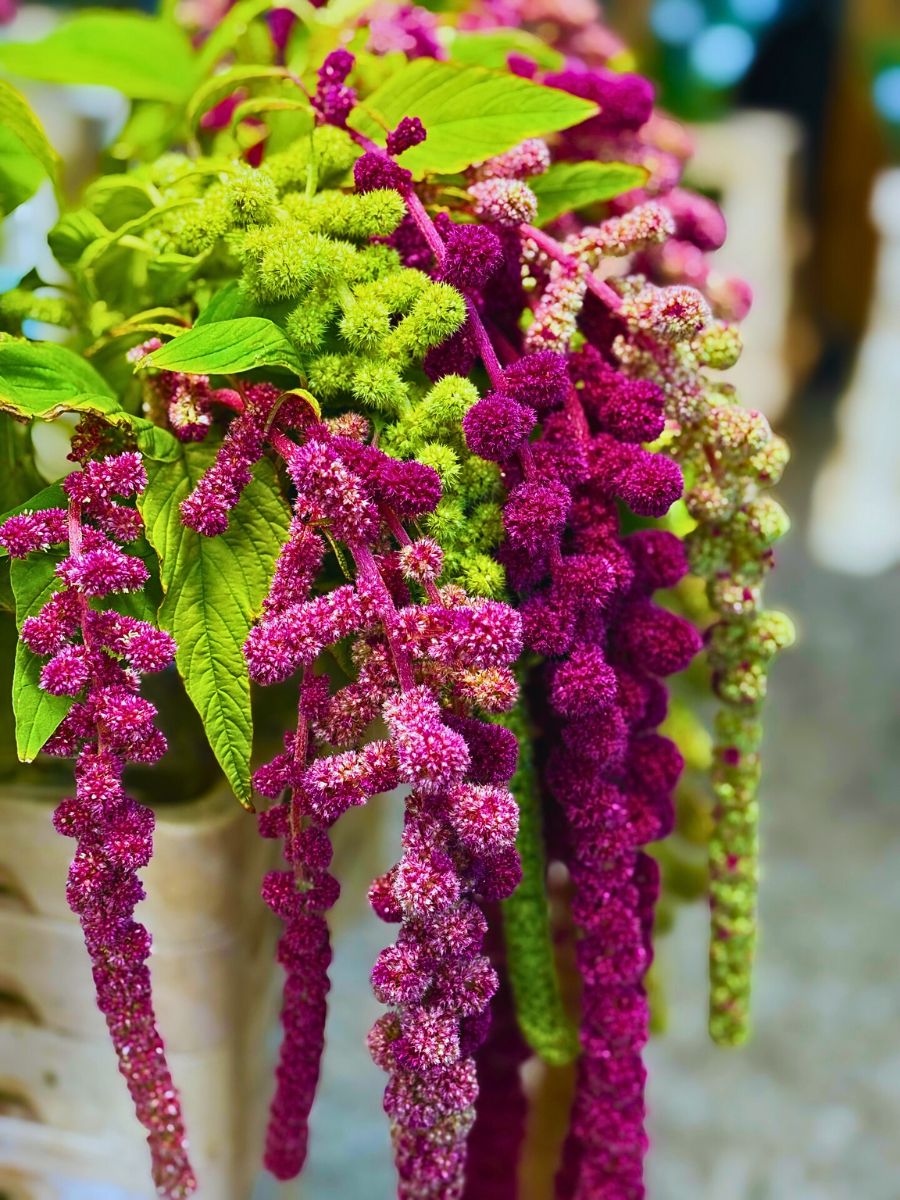
Growing and Caring for Your Love Lies Bleeding Plants
Once established, Love Lies Bleeding plants require minimal maintenance. Water regularly during the first few weeks after transplanting, helping roots establish themselves. Once growing vigorously, these drought-tolerant plants need supplemental water only during extended dry periods. Overwatering causes more problems than under-watering with mature plants.
Fertilization should be minimal. Monthly applications of balanced liquid fertilizer at half strength suffice if your soil is particularly poor because rich feeding produces lush foliage but fewer flowers. Deadheading spent flowers is not necessary for continued blooming, but removing them keeps plants looking tidy and prevents unwanted self-seeding in areas where Amaranth might become weedy. In most temperate gardens, however, self-seeding is not problematic since seedlings rarely survive winter.
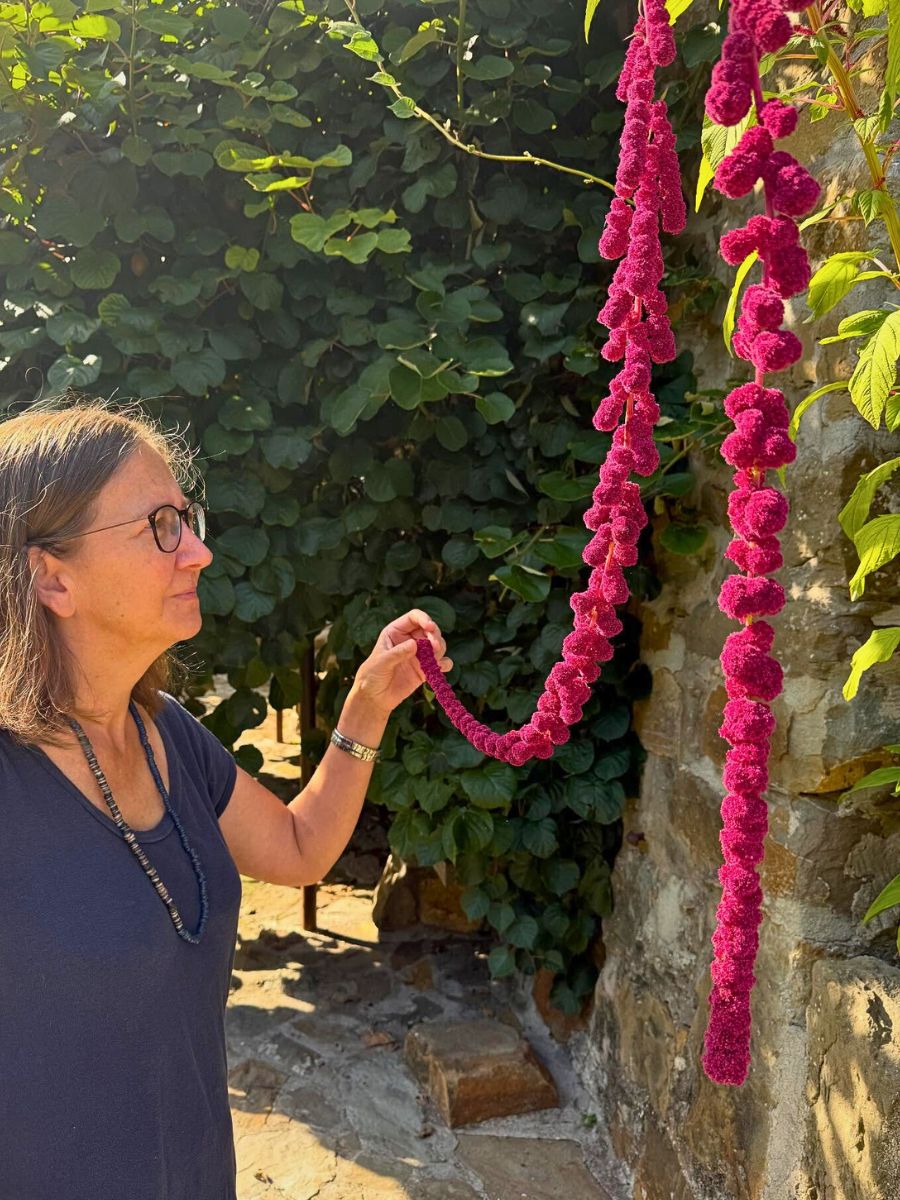
How to plant the Love Lies Bleeding plant successfully also calls for spacing considerations. Allow 12-24 inches between plants, depending on variety size. Adequate spacing ensures good air circulation, reducing disease risk while giving each plant room to develop its full cascading effect.
Potential Love Lies Bleeding Plant’s Challenges and Solutions
The Love Lies Bleeding plant generally grows trouble-free, but occasional issues arise. Aphids sometimes colonize tender new growth. Early detection allows for simple removal by hand or with a strong water spray. Severe infestations may require repeated applications of insecticidal soap.
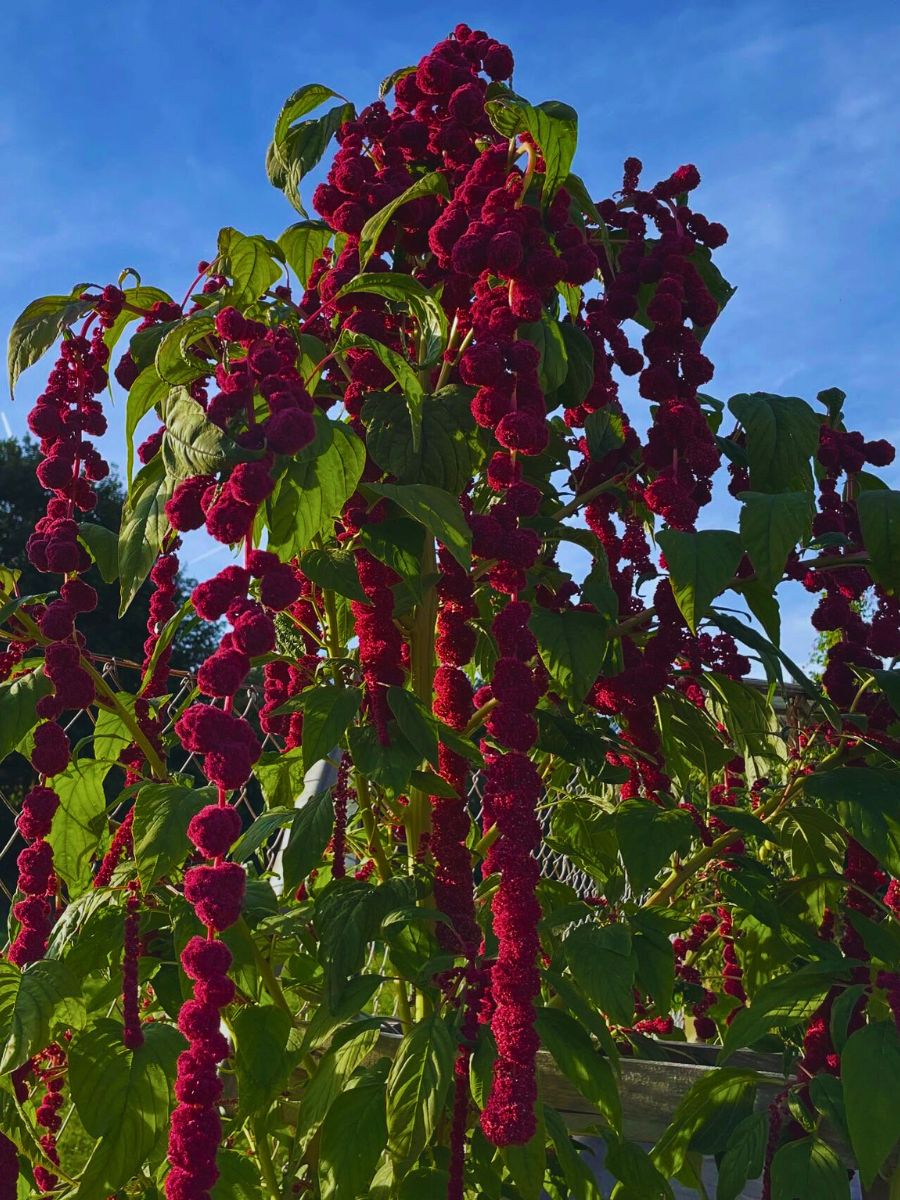
Viral diseases can affect amaranth, causing mottled or distorted leaves. Since there is no cure yet for viral infections, just remove and destroy affected plants to prevent spread. Also, since aphids often transmit plant viruses, controlling these pests reduces disease risk. In very humid climates, fungal issues occasionally develop. Proper spacing for air circulation and avoiding overhead watering helps prevent problems. Water the soil level early in the day so foliage dries before evening.
Love Lies Bleeding Design and Decorative Applications
The Amaranthus flower of the Love Lies Bleeding plant has great versatility in design applications. As fresh cut flowers, those long tassels create dramatic vertical interest in arrangements. Cut stems when flowers are fully developed but before seeds begin forming. They last 7-10 days in water, maintaining their velvety texture and rich color.
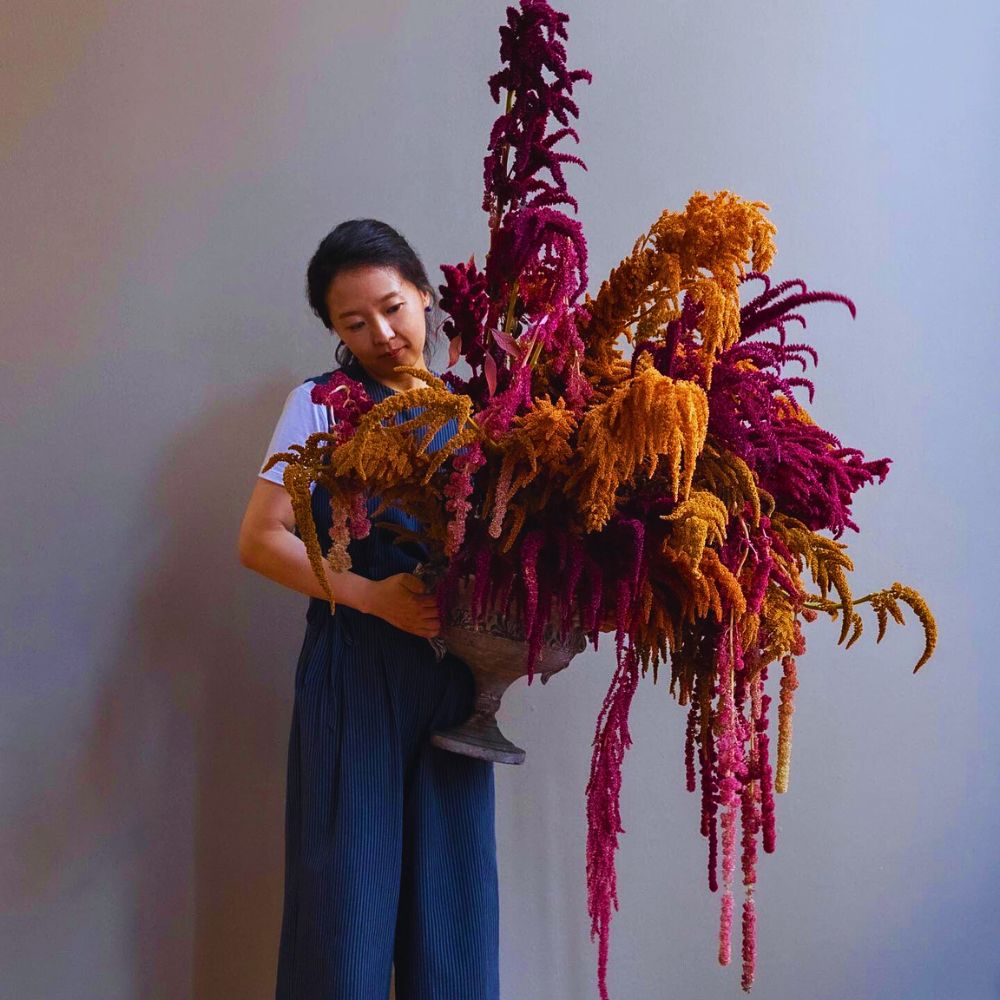
Dried arrangements showcase another aspect of the Love Lies Bleeding plant in design. Harvest stems when flowers reach peak color, then hang them upside down in a dark, well-ventilated space. The tassels dry beautifully, retaining much of their original hue and creating lasting home décor elements. Victorian parlors featured dried Love Lies Bleeding floral elements extensively, and contemporary interior design is rediscovering its gothic elegance.
Wedding designers also value the Love Lies Bleeding for autumnal ceremonies, where its burgundy tones complement seasonal palettes. The symbolic associations with lasting love make it particularly expressive in romantic contexts, despite—or perhaps because of—its melancholic name.
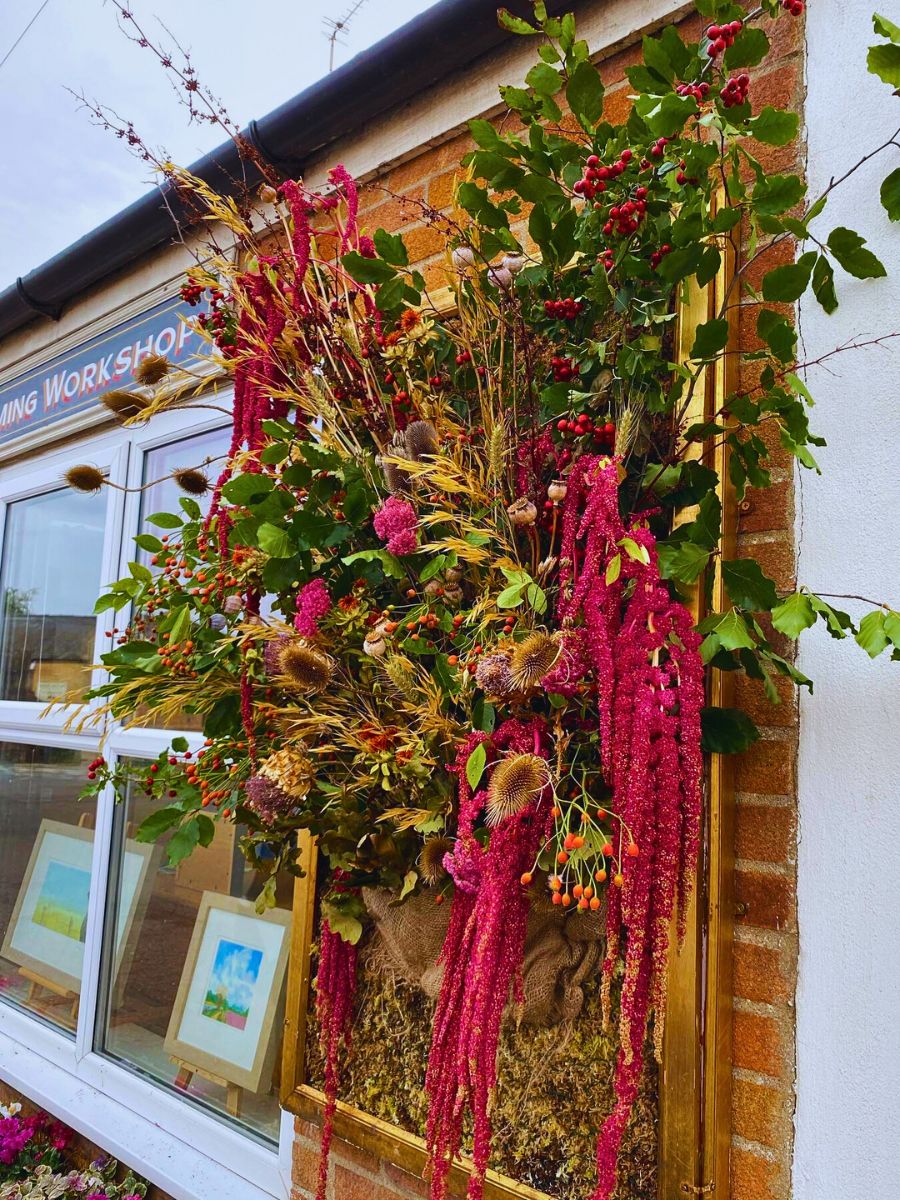
Contemporary floral designers use the Amaranth flower of the Love Lies Bleeding in varied ways. They could be draped along mantels, woven into wreaths, suspended as ‘curtains’, or featured in cascading bridal bouquets. Its flexibility when fresh allows for creative manipulation while maintaining structural integrity.
In garden design, the plant's weeping habit creates movement and drama. Plant them where their tassels can cascade over paths, spill from raised beds, or accent container arrangements. The deep crimson color provides an exquisite contrast against silvery foliage plants, like Dusty Miller or Artemisia.
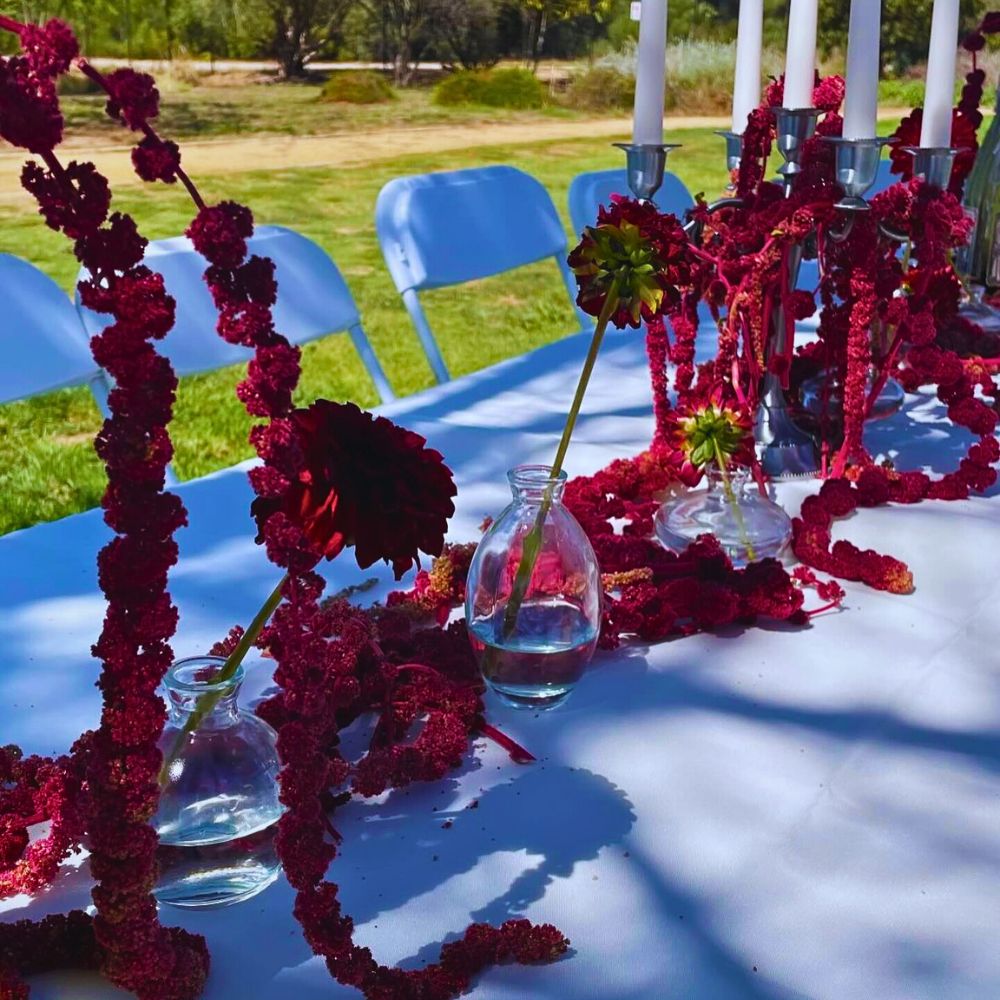
Basically, the versatility of this plant means it thrives where many ornamentals fail, and still, yet, it combines visual drama, symbolic depth, exotic appearance, easy culture, historic significance, and contemporary relevance. So, regardless of whether it draws you by its mythological connotations, cultural meanings, design versatility, or just its cascading form, Amaranthus caudatus—Love Lies Bleeding—is worth attention. Plant it once, and understand why its presence enhances ordinary garden spaces, while ornamenting designs when used as cut flowers.
Feature image by @greenes.farm. Header image by @the_joy_of_photography_.

